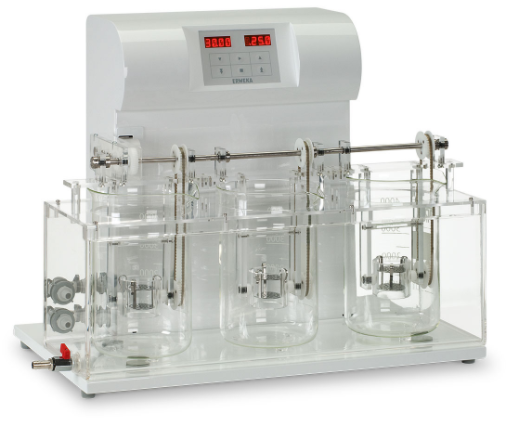Formulation of Suspensions
Biphasic liquids such as suspensions and emulsions are unique dosage forms because many of their properties are due to the presence of a boundary region between two phases. In suspensions, a liquid and an insoluble solid meet to form an interface. In the case of emulsions, two immiscible liquids, usually oil and water, form an interface.
Formulation of Suspensions
Wetting agents: They are added to disperse solids in the continuous liquid phase. Example: Polysorbate 80, 20, span, etc.
Suspending agents: They are added to flocs the drug particles.
Thickeners: They are added to increase the viscosity of the suspension. Example: guar gum, xanthan gum.
Buffers and pH adjusting agents: They are added to stabilize the suspension to a desired pH range.
Coloring agents: They are added to impart the desired color to suspension and improve elegance.
Preservatives: They are added to prevent microbial growth.
Achieving Excellence with Six Sigma
Preparation of Suspensions
Step 1: Suspensions are prepared by grinding the insoluble materials in the mortar to a smooth paste with a vehicle containing the wetting agent.
Step 2: All soluble ingredients are dissolved in the same portion of the vehicle and added to the smooth paste to step 1 to get slurry.
Step 3: The slurry is transformed into a graduated cylinder, and the mortar is rinsed with a successive portion of the vehicle.
Step 4: Decide whether the solids are
• Suspended in a structured vehicle
• Flocculated
• Flocculated and then suspended
Add the vehicle containing the suspending agent (or) flocculating agent.
Step 5: Make up the dispersion to the final volume. Thus suspension is prepared.
Stability of Suspension
Factors that contribute to the appreciable stability of a suspension include:
1. Small Particle Size:
• Reduced size of the dispersed particle increases the total surface area of the solid.
• The greater the degree of subdivision of a given solid the larger the surface area.
• The increase in surface area means also an increase in the interface between the solids and liquids leading to an increase in the viscosity of a system.
2. Increasing the Viscosity:
Increased viscosity of the continuous phase can lead to the stability of suspensions.
This is so because the rate of sedimentation can be reduced by the increase in viscosity.
Viscosity increase is brought about by the addition of thickening agents to the external phase.
It is important to note that the rate of release of a drug from a suspension is also dependent on viscosity.
Temperature:
Another factor that negatively affects the stability and usefulness of pharmaceutical suspensions is the fluctuation of temperature. Temperature fluctuations can lead to caking and claying.
